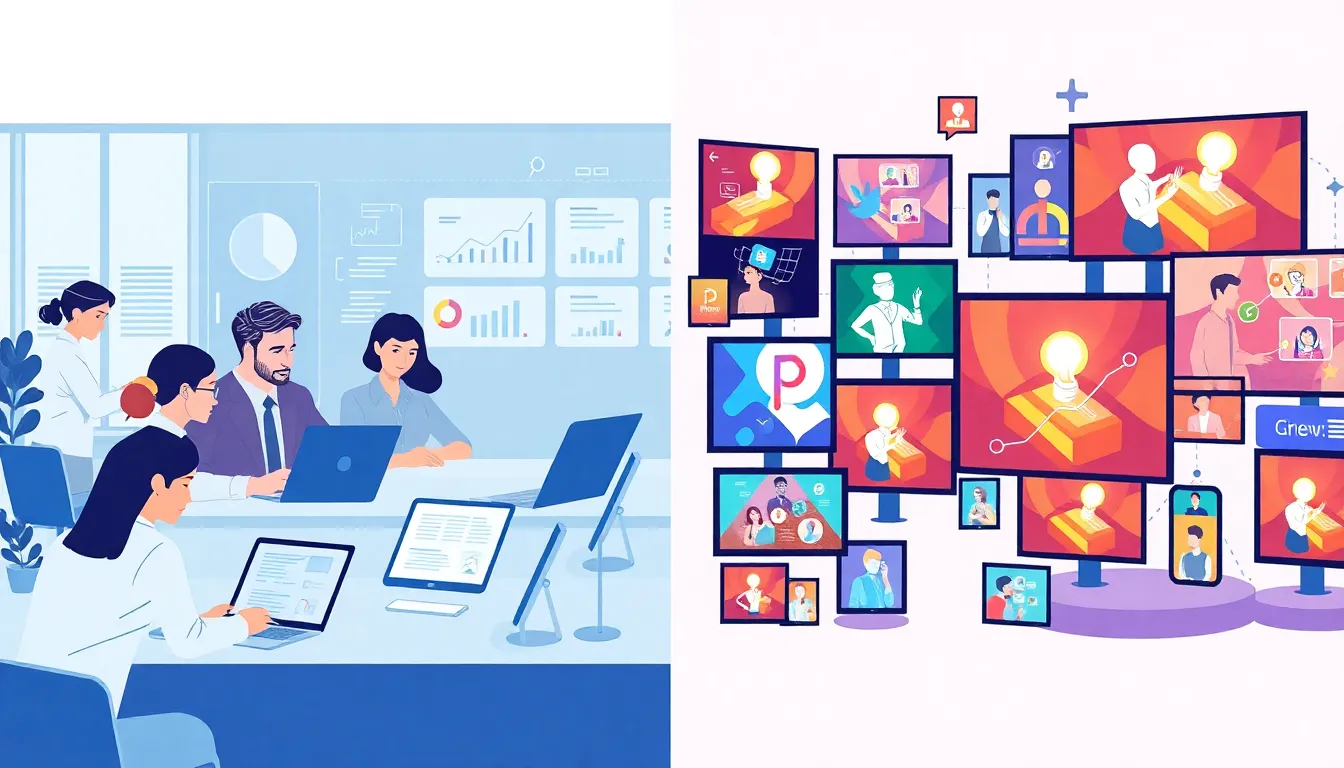Table of Contents
ToggleIn the ever-evolving world of digital marketing, two acronyms reign supreme: martech and adtech. While they might sound like the latest superhero duo, they actually represent powerful tools that can either make or break a marketing strategy. Martech focuses on the behind-the-scenes magic, helping businesses manage customer relationships and analyze data. Adtech, on the other hand, is all about getting those flashy ads in front of the right eyeballs.
Understanding the difference between these two can feel like deciphering a secret code. Do you want to nurture customer relationships or blast ads across the internet like confetti? The choice isn’t just about preference; it’s about maximizing your marketing budget and achieving success. So buckle up as we dive into the fascinating world of martech vs adtech and discover which one deserves a spot in your marketing arsenal.
Understanding Martech vs Adtech
Martech and adtech play critical roles in digital marketing. Understanding their differences enhances marketing strategies and optimizes budget allocations.
What Is Martech?
Martech refers to marketing technology that aids in managing customer relationships, analyzing data, and streamlining marketing efforts. It encompasses tools for email marketing, content management systems, and customer relationship management software. Businesses use these tools to personalize customer experiences, track engagement, and optimize conversion rates. Examples include Salesforce, HubSpot, and Marketo, which provide capabilities to enhance campaigns and measure their effectiveness. By utilizing these technologies, organizations can create targeted marketing strategies that resonate with their audiences.
What Is Adtech?
Adtech, or advertising technology, focuses on the delivery and performance of advertisements. This encompasses platforms for programmatic buying, ad exchanges, and demand-side platforms that facilitate real-time bidding. Key purposes of adtech include reaching specific audiences and maximizing return on investment for ad spend. Noteworthy examples include Google Ads and The Trade Desk, which offer data-driven insights into ad performance and audience targeting. Effective adtech implementation helps advertisers enhance visibility and engagement across various channels.
Key Differences Between Martech and Adtech

Understanding the distinctions between martech and adtech is essential. They serve different purposes within the digital marketing landscape.
Target Audience and Goals
Martech targets marketers who focus on customer relationship management and data analysis. Its primary goal revolves around enhancing customer experiences and optimizing marketing strategies. Adtech, conversely, aims at advertisers and seeks to deliver ads effectively to specific audiences. The focus lies in maximizing ad performance and return on investment. While martech emphasizes audience engagement, adtech prioritizes precise ad placements, reaching users at the right moment.
Tools and Technologies Used
Martech includes various tools designed to manage marketing efforts. Examples such as Salesforce, HubSpot, and Marketo streamline customer interactions and track engagement metrics. Adtech employs distinct technologies for delivering advertisements effectively. Platforms like Google Ads and The Trade Desk facilitate programmatic buying and offer data-driven insights. Both sets of tools are essential for businesses aiming to leverage digital marketing efficiently, each addressing unique aspects of the marketing process.
Benefits of Martech and Adtech
Martech and adtech offer distinct advantages that enhance digital marketing strategies. Understanding these benefits can help marketers and advertisers optimize their efforts and achieve better results.
Advantages of Martech
Martech tools enable businesses to manage customer relationships effectively. They provide insights into customer behavior, allowing for personalized marketing efforts. Businesses improve engagement through targeted email campaigns and content management systems. Automation features in platforms like HubSpot streamline processes, saving valuable time and resources. Additionally, analytics capabilities help measure campaign performance and optimize strategies for higher conversion rates. By utilizing martech solutions, companies enhance customer experiences, fostering loyalty and retention.
Advantages of Adtech
Adtech focuses on the efficient delivery of advertisements. It utilizes data to target specific audiences, increasing the effectiveness of marketing campaigns. Programmatic advertising platforms enable real-time bidding, optimizing ad spend and maximizing return on investment. Adtech tools like Google Ads provide comprehensive insights into ad performance, allowing advertisers to adjust strategies based on real-time data. Furthermore, these technologies facilitate cross-channel advertising, ensuring consistent messaging across various platforms. By leveraging adtech, businesses reach potential customers where they are most active, enhancing visibility and engagement.
Integration of Martech and Adtech
Integrating martech and adtech enhances digital marketing effectiveness and provides a comprehensive approach to customer engagement. Achieving this integration presents unique challenges and requires adopting best practices.
Challenges of Integration
Data silos often emerge during the integration process. Fragmented data hinders a unified view of customer interactions across channels. Additionally, compatibility issues arise between the varying technologies employed in martech and adtech. Disparate systems may struggle to share data seamlessly. Notably, skilled personnel familiar with both martech and adtech are essential. Limited expertise impedes the execution of effective strategies and drives up costs. Organizations must also overcome differing objectives; marketing teams typically prioritize customer relationship management while advertising teams focus on ad performance. Aligning these goals necessitates collaboration among departments.
Best Practices for Successful Integration
Establishing a shared vision among teams is critical for success. Clear communication fosters understanding and guides collaborative efforts. Selecting compatible tools ensures smooth data sharing and optimizes performance across platforms. Regular training sessions help build a knowledgeable team well-versed in both martech and adtech functionalities. Integrating analytics capabilities enhances insight generation across the marketing ecosystem. Frequent evaluation of performance metrics allows teams to adjust strategies and maximize ROI. Ultimately, cultivating a culture of collaboration between marketing and advertising teams produces better alignment and outcomes.
Understanding the differences between martech and adtech is crucial for any business aiming to succeed in the digital landscape. Each serves a unique purpose that can significantly influence marketing strategies and budget allocation. By leveraging the strengths of both technologies, organizations can enhance customer engagement and optimize advertising efforts.
Integrating martech and adtech not only streamlines processes but also fosters collaboration between marketing and advertising teams. This alignment can lead to improved outcomes and a more cohesive approach to reaching target audiences. Embracing these tools allows businesses to navigate the complexities of digital marketing with confidence, ultimately driving growth and success in a competitive environment.







